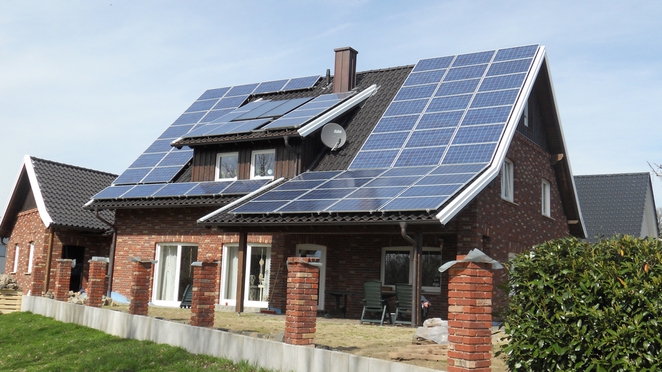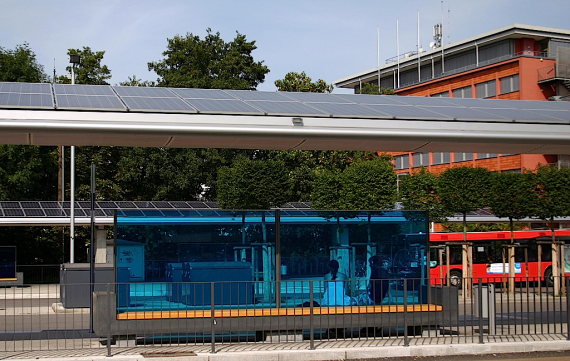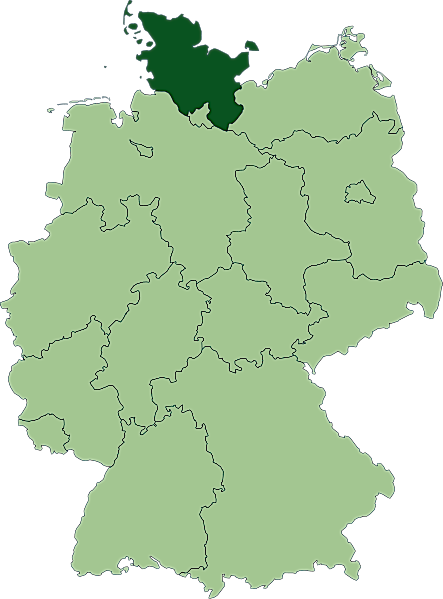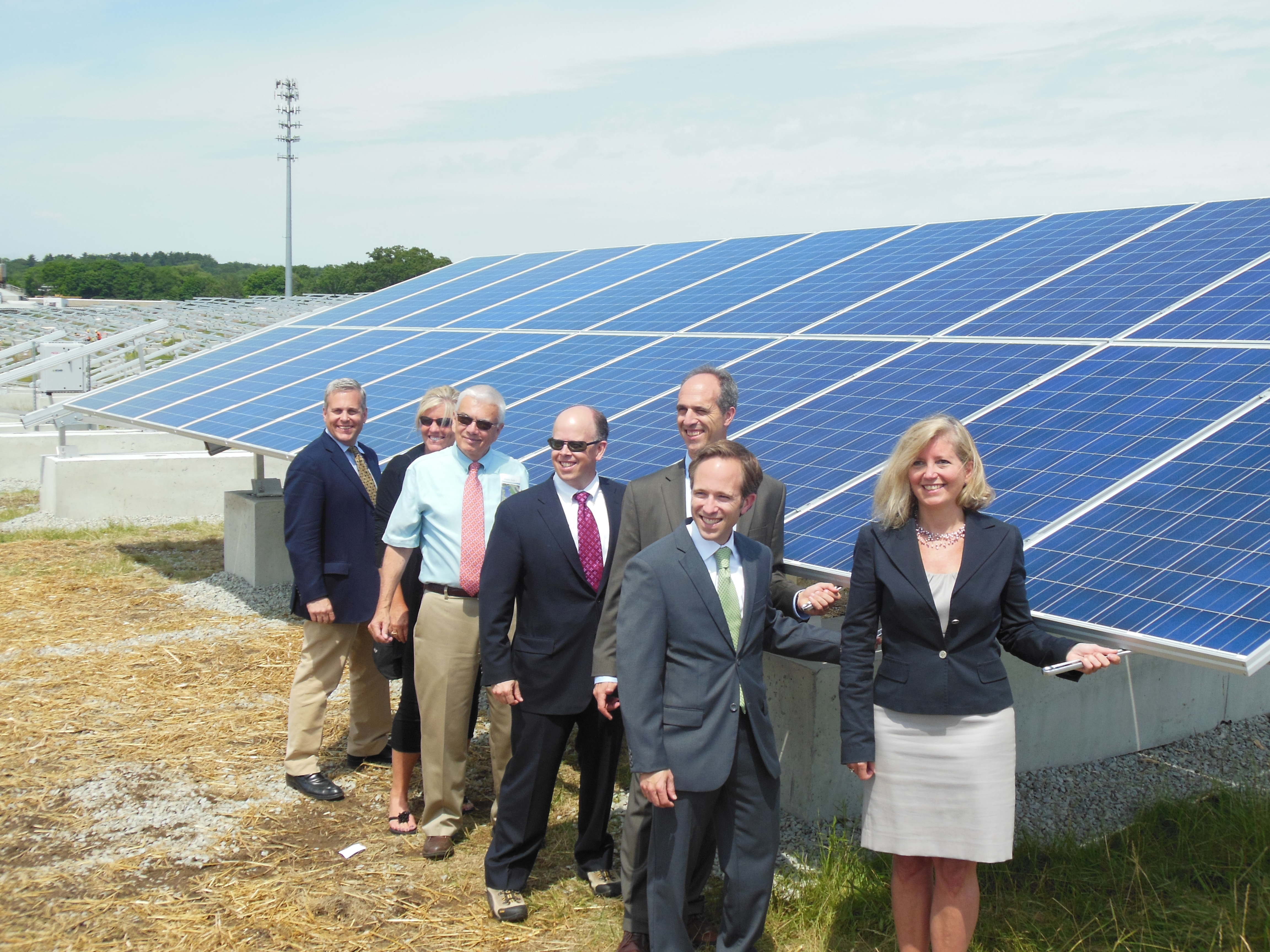
About a month ago, I wrote a post titled Five days in solar news which tried to give readers a sense of just how fast solar power is developing—not that there aren’t up and downs, as is the case with every technology.
Theoretically, I could write a post like that every week; if I had time I probably would–there are many developments and ongoing issues that we’re just not able to keep up with here. Probably no one is able to keep up with all of them.
And it gets even harder trying to keep up with developments throughout the entire renewables/clean energy arena: not only solar, but wind, geothermal, more exotic technologies like algae, as well as distributed generation generally, electricity storage, the grid, the debate over what the grid will look like in 20 years as people and businesses will have the option of dropping off of it, and much more…
One of the better blogs to try to keep up with all these developments is listed on the right sidebar: cleantechnica.com, I read it every day. For those interested in the more geekier side of energy, including news on all aspects of electricity generation, try utilitydive.com; I read that every day too. We’ll be adding more to that list.
So today, I’ll take another snapshot look, this time trying to cover some broader developments and issues that have been reported on just in the past week or so, with a special emphasis on Germany’s energy transition, or Energiewende.
But first, a few reflections.
It has been widely reported, here and elsewhere—even recently by President Obama–that a new solar rooftop installation is being put up every four minutes in the U.S., a number projected to decline to every 90 seconds within 18 months. Actually, it’s already down to about every 2 ½ minutes, so 90 seconds now seems a low-hanging goal.
But what does that really mean on a national level? Not as much as it might appear, and not nearly what is needed.
A new solar rooftop installation every 2 ½ minutes, assuming that means 24 hours/day, seven days a week, works out to 24 per hour, 576 per day, and 210,240 per year. That’s not even enough to cover Los Angeles in any big fashion. In 2016, when they’re going up every 90 seconds, it will mean 40 per hour, 960 per day, 350,400 per year. Ok, maybe now, after a year or two of that rate, we’ve got L.A. and San Diego covered.

In short, with probably 100 million rooftops available on homes and businesses in the U.S. (admittedly, a wild guess), not to mention at least hundreds of thousands of open-air parking lots large and small, we have a long way to go. And that also means a long way to go before rooftop solar generates a meaningful percentage of U.S. electricity. That does, of course, mean a lot of opportunity for solar manufacturers and installers alike as well as those who finance rooftop solar projects, and a new installation every 90 seconds is only an interim goal, certainly not a stopping point.
As costs continue to go down—and we have to hope they will, although it is perhaps risky to simply assume they can continue to drop at the rate of the past five years—and capacity continues to ramp up, 1,000,000 rooftops per year appears feasible by the end of the decade. Can we get to 3,000,000 per year by 2025? Someone more expert than I would have to weigh in on that possibility… At even 1,000,000/year, when added to renewable power plants of all types and continued success with energy efficiency programs, solar power—and renewables generally—would become a very meaningful part of our electrical supply.
There are certainly signs of hope: in an e-mail circulated by Ken Bossong of the Sun Day Campaign today, he writes:
“First, wind has now passed the 5 percent threshold (i.e., it accounted for more than 5% of the electricity generated in the U.S. during the first third of 2014).
“Second, non-hydro renewables have produced more electricity in the U.S. than conventional hydropower for each of the first four months of 2014 as well as for the cumulative period (52.7% vs. 47.3%).
“Third, renewables provided over 14% of the nation’s electricity for the first four months of 2014 – a level that the U.S. Energy Information Administration has been saying might not be reached until 2040.
“Fourth, the electrical generation from solar for the first four months of 2014 is more than double that for the same period in 2013.”
And some more personal signs of hope: I live in a small working-class suburb of Washington, DC (yes, DC does have a few working-class suburbs left). Our city hall took advantage of President Obama’s stimulus plan to install solar panels on its rooftop a few years ago. For a while, it was the only solar-powered building in the city. But over the past three or four months, two houses in the next block down from mine have installed full solar rooftop installations; another one around the corner did too. Four blocks away, but in the next town over, surprisingly, an apartment complex appears to be doing a test of solar power: it’s installed solar arrays on three of about 15 three-story buildings in the complex. I say surprisingly, because apartment owners, especially in low-moderate income communities like ours, rarely worry about the price or cleanliness of electricity—they simply pass on any costs to their renters. I hope we see a lot more of this.
And, as I drive around a relatively small area on a weekly basis—for those who know the DC area, my normal driving takes me, at least once a week, in an area from Prince Georges County just above the DC line to outer Bethesda in Montgomery County, with a few twists and turns—I have run into a few more recent solar installations. That’s the good news. The bad news is, of course, as I’m sure it is where you live too, they remain something noticeable because they remain rare. The pace needs to pick up.
For my own part, I contacted two solar companies about leasing a solar system for my own home. One took a look at my past year’s electricity bills (which almost never exceed $100/month since we don’t have central air conditioning) and said forget it, they’d make no money on the deal. The other said I would have to cut down two trees for them to install a system. Unfortunately, the trees aren’t on my property and while my neighbor would be happy for me to pay to cut them down, that’s about a $4,000 investment I don’t have right now, and would extend the payback period by several years at least.
Anyway, briefly on to some of the developments reported on in the past week or so in 21st century energy….
Germany: Between June 6 and 9, Germany broke three solar power records, including topping 50% of the nation’s total electricity generation on June 9, a national holiday, and perhaps more importantly, setting a new mark June 6 for total solar generation—reaching 24.24 Gigawatts. By the way, the U.K. also broke its previous record for solar generation on June 21, reaching about 7.8 GW of power. It should go without saying that neither country is known for its sunny climes…

Meanwhile, the northern German state of Schleswig-Holstein, on the border of Denmark and the country’s windiest area, will become 100% renewable powered—not at some distant date in the future, but this year. The state’s renewable energy goal is actually 300% of its electricity needs, so that it can export power elsewhere in Germany and perhaps elsewhere in Europe as well.
Much has been said and written about Germany’s Energiewende—its transition away from, first, nuclear power and then coal and other fossil fuels and to 100% renewables by mid-century—with plenty of nuclear advocates and some uninformed media arguing that the plan is actually leading to more dirty coal use. Of course, while Germany has been moving to end nuclear power and expand clean energy for more than a decade, its current plan and the shutdown of the first third of its nuclear reactors only developed after the 2011 Fukushima accident, so it’s perhaps a little early to be declaring it either a failure or success.
But as for that increased coal argument, it is mostly specious, writes Craig Morris on the Energiewende blog:
“This concern is based largely on a temporary uptick in coal power in 2012/13 (due to a cold winter and greater power exports) and on a round of new coal plants currently going online.
“But an in-depth look reveals that coal is not making a comeback in Germany. The current addition of new coal projects in Germany is a one-off phenomenon. Recent projects started in 2005-2007 as part of an overall trend in Europe caused by low carbon prices and upcoming stricter pollution standards for coal plants. New coal plants in Germany are unrelated to the nuclear phaseout of 2011 after the Fukushima accident.“Instead, renewables have more than offset the shutdown of nuclear plants. Since 2003 (the start of the initial nuclear phaseout), electricity from nuclear dropped by 68 TWh. Over the same time, renewable electricity increased by 106 TWh. During the nuclear phaseout (completed by 2023), this trend can be expected to continue, though the specific outcome depends on the actual growth of renewables and demand for power in Germany and neighboring countries.”
Morris does argue, however, that Germany could adopt policies to speed its coal phaseout while keeping to its nuclear phaseout target as well.
As is the case everywhere, electricity storage is a key to German expansion of solar power and there again, Germany is ahead of the rest of the world. Nearly 7,000 battery storage systems for solar PV installations were installed in Germany in 2013 (about 3,000 more than previously reported).
“Tobias Rothacher, renewable energies expert at Germany Trade & Invest, expects to see more. Battery sales will increase as their price falls, and once battery parity is achieved, possibly ‘within the next two years,’ the majority of PV sales will probably be in conjunction with battery.
“He explained, ‘Since the cost of electricity from PV is significantly lower than buying energy from the grid (~EUR 0.15 PV vs. ~EUR 0.30 utility), customers want to use as high a proportion of electricity from their PV systems as possible. If they were to feed the electricity into the grid, they would only receive a feed-in tariff of around EUR 0.13 – meaning that self-used energy from PV is worth twice as much as energy fed into the grid.’”
France: Germany, of course, is not the only country moving ahead with renewables and energy transition. France, the nuclear industry’s previously shining beacon, this week announced a financing plan for its own energy transition away from nuclear power and toward renewables and energy efficiency. While its goals are seemingly more modest than Germany’s, in fact they are not so different. While France has not announced an intent to become 100% renewable by 2050, it does have a nearer-term goal to be 40% renewable-powered by 2030. And it hopes to reduce its reliance on nuclear power from nearly 80% to 50% by 2025. That’s nearly a 30% reduction in nuclear power’s share and is even more ambitious than Germany’s program in that respect. By comparison, nuclear power accounted for about 22% of German electricity in 2010 and is scheduled to drop to zero by 2022.
Japan: Meanwhile, spurred on by anti-nuclear sentiment in Japan, that country increased its solar capacity by nearly 500% over its fiscal year ending March 31, 2014 from the previous fiscal year. 7.04 GW of new solar was added in the most recent year compared to 1.66 GW in the year ending March 31, 2013. That’s not nearly enough to make up for the loss of 50+ reactors, of course, but it’s a good start.
Massachusetts: Here in the U.S., a couple of very hopeful developments in Massachusetts—like Germany and the U.K., not known throughout our country as a sunbather’s paradise. Governor Patrick Deval said in a speech this week that “We have a solar revolution underway here in the Commonwealth…Solar is a key part of our clean energy future.” He noted that Massachusetts met its 2016 goal of 250 MW of solar installed four years early, so he had increased the goal to 1.6 GW by 2020. In his speech, Deval said he now wants to meet that goal before he leaves office at the end of this year. Massachusetts now ranks fourth in the nation in terms of installed solar capacity.

And, with installation of a new 3 MW solar facility, the Massachusetts town of Scituate claims to be the first in the nation to operate 100% of its city-owned facilities with renewable energy. We’re not sure about that, a California town made a claim recently that the entire town is powered with renewables. And Cincinnati, Ohio purchases 100% renewables, although it doesn’t produce them itself. In any case, when there is room for dispute about something like this, that’s a good thing. And we’ll laud every city and town that makes it to 100% renewable.
Utah: In Utah, solar may already be at grid parity, despite the fact that the state runs primarily on cheap—and dirty—coal, and the state has no Renewable Portfolio Standard. Several utilities there have recently announced purchase power agreements for solar power that appear that they will come in at even less cost for ratepayers than that cheap coal. Utah has tremendous solar potential, but so far has done little to encourage it; only 18.2 MW of solar power are currently installed in the state—but 5 MW of that was installed in the first quarter of this year, a sign that even without strong government support, solar is gaining.
Purgatory: Of course, don’t expect the U.S. House of Representatives to help. A House Appropriations Subcommittee last week approved a federal spending bill that would cut $113 million from renewable energy programs and increase fossil fuel subsidies by more than $500 million and nuclear programs by $9.8 million next year. Fortunately, like most bills that originate in the House (or, for that matter, in the Senate as well) these days, the bill has virtually zero chance of becoming law.
Everywhere: Finally, back to the more optimistic news, the New York Times reports on a relatively new way homeowners, renters, and virtually anyone with unsuitable or unavailable rooftop space can get in on solar PV: community solar gardens. If you’re one of the 85% of Americans the Times says live in such a space (although that number seems high to us), you’ll want to read this article and look into existing programs in your community, or, even better, perhaps create such a program for your community.
[polldaddy poll=8147831]
Michael Mariotte
June 25, 2014
Permalink: https://www.nirs.org/2014/06/25/a-week-of-21st-century-energy/
You can now support GreenWorld with your tax-deductible contribution on our new donation page here. We gratefully appreciate every donation of any size–your support is what makes our work possible.
Comments are welcome on all GreenWorld posts! Say your piece above. Start a discussion. Don’t be shy; this blog is for you.
If you like GreenWorld, you can help us reach more people. Just use the icons below to “like” our posts and to share them on the various social networking sites you use. And if you don’t like GreenWorld, please let us know that too. Send an e-mail with your comments/complaints/compliments to nirs@nirs.org. Thank you!
Note: If you’d like to receive GreenWorld via e-mail daily, send your name and e-mail address to nirs@nirs.org and we’ll send you an invitation. Note that the invitation will come from a GreenWorld@wordpress.com address and not a nirs.org address, so watch for it.




Speaking of Japan: http://www3.nhk.or.jp/nhkworld/english/news/20140626_32.html
TEPCO shareholders want to restart the closed reactors
“…President Naomi Hirose apologized to the people of Fukushima and large parts of society for causing trouble and anxiety over the contaminated water problems.
Some shareholders said it’s outrageous that the company responsible for the accident aims to restart reactors that are offline. Others said the firm must not make the same mistake at the Kashiwazaki-Kariwa nuclear plant in Niigata Prefecture.
TEPCO executives responded that nuclear power is an important part of the nation’s basic energy plan.
The meeting rejected all 10 proposals by shareholders including those calling for abolishing the Kashiwazaki-Kariwa and Fukushima Daini nuclear power plants. All proposals submitted by TEPCO’s management were approved.”
TEPCO refuses to admit the dire and deadly health consequences of the Fukushima reactor meltdowns.